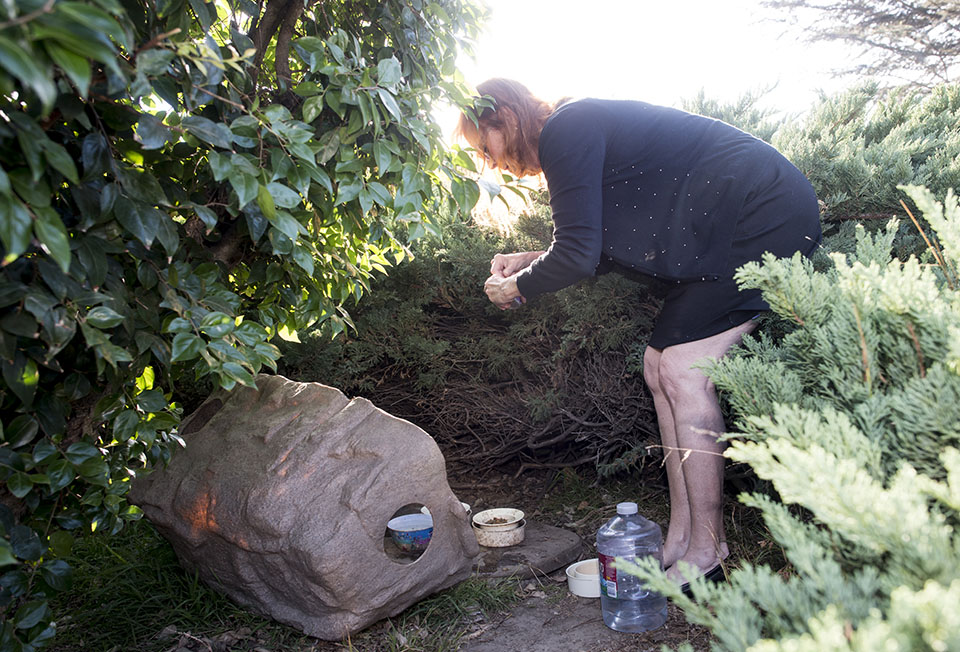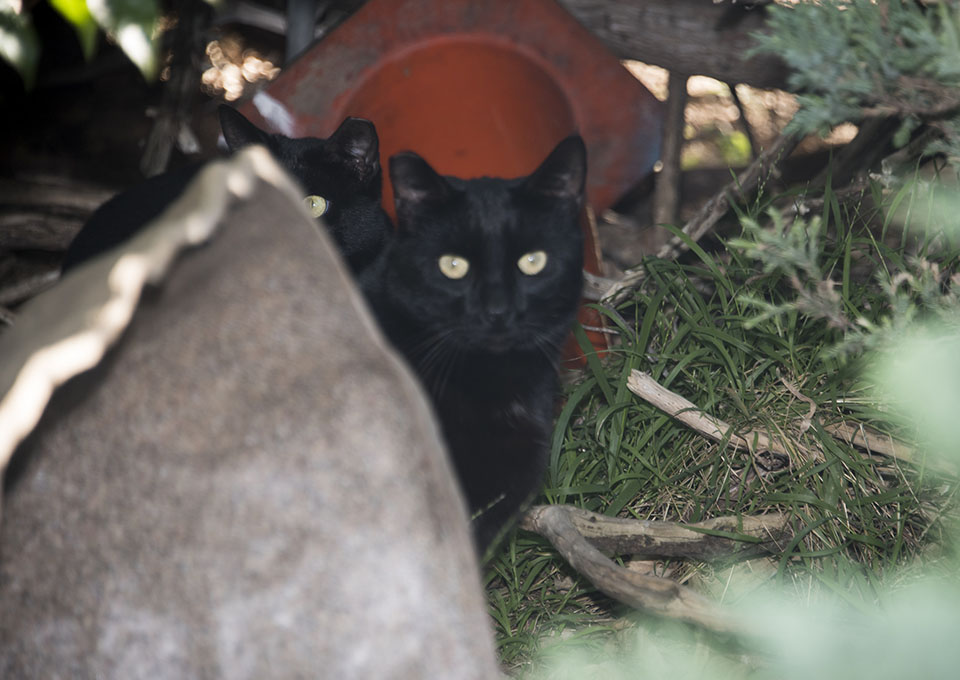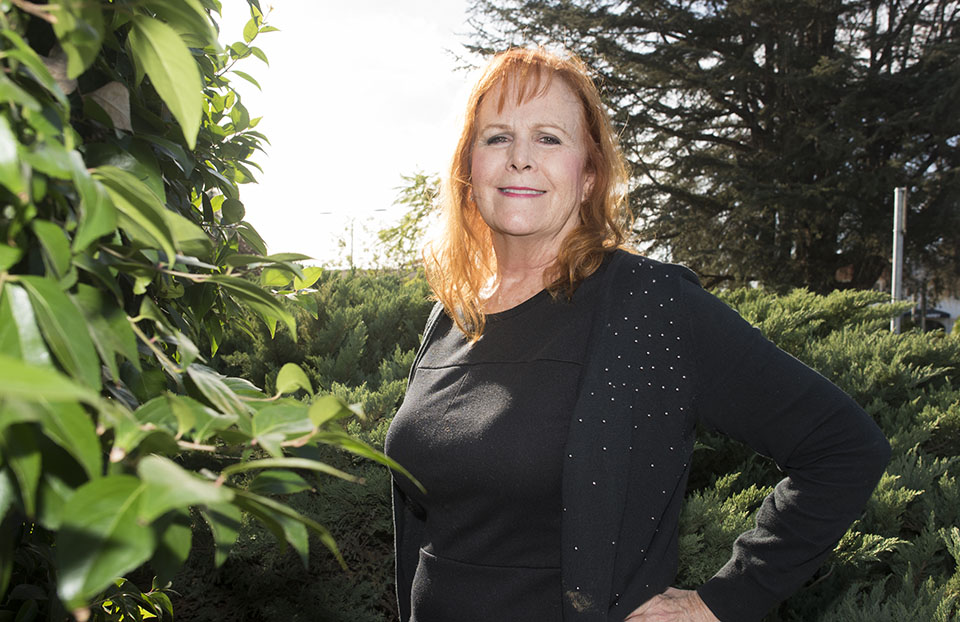Volunteers Foster Campus Rodent Control with Free-Range Felines
Hidden below a tree, right next to one of the parking lots at California State University, Northridge, a big rock escapes human attention. But for a pack of four-legged campus residents, this is mecca: The plastic “rock” is in fact a cat feeding station, and the facade covers several bowls of kitty food and water. Volunteers maintain five such stations across CSUN, to sustain the 24 feral cats living on campus.
“The benefit of the cats is that they are a chemical-free rodent control. They take care of the rats and mice on campus,” said Louise Adams, alumna and president of the CSUN Cat People, a group of students, staff and faculty who manage the feral cat population on campus. “We keep the locations low key, because cats are very shy. To the casual person walking by, it’s not apparent that cats are eating here.”
The mousers certainly earn their keep by keeping the rodent population under control on the 356-acre, park-like campus. It’s a happy, symbiotic relationship that started out with a nuisance.
Former professor Sabina Magliocco founded the CSUN Cat People group in 2001. Even before that, a small number of staff and faculty fed the strays, recalled Magliocco. After the Northridge earthquake in 1994, 75 feral cats were living on campus and the population kept increasing. Magliocco reached out to the administration to develop a solution to the problem. The CSUN Cat People started to trap the strays, in order to spay and neuter and vaccinate the cats against rabies. Some tasty tidbits enticed the kitties — Kentucky Fried Chicken never failed — to go into a humane trap. Once they were lured in, the volunteers took the cats to veterinarians to get them fixed and cared for — and then the group released the cats to their environment.
“We got the population stabilized,” said Adams ’06 (History). “The existing cats on campus form stable family groups that keep other cats away.”
All veterinary expenses were paid for and continue to be funded out of pocket by the Cat People volunteers, she said. CSUN’s Physical Plant Management staff, which works closely with the group, provided the feeding stations.
Adams knows all the cats living on campus. “I have a spreadsheet of each cat, with a description of it. I also keep in touch with all the people providing the food,” Adams said. Eight volunteers currently make up the squad feeding the felines daily on campus.
One of them is Jim Lunsford, analyst/special projects in the College of Humanities. He has helped feed the cats every Wednesday since 2014. Together with his son Hudson, Lunsford came up with names for some of the kitties. “Hazel” is a female cat named after a ’60s television show. She stays in a group with tomcats “JC” (short for “Junior Cat”), “Tough Guy” and “50 Shades.”
“The cats’ personalities are pretty clear,” said Lunsford. “Hazel is very particular. She always eats out of her own bowl. And she will leave when the other cats arrive.”
“Mr. Grey,” an approximately 6-year-old grey cat, is sometimes spotted hanging around the Department of Physics and Astronomy, where he is lovingly called “Einstein.” “Gussie,” about 5 years old and female, is one of the most corpulent kitties on campus.
To Adams, the project is an affair of the heart. She lives in Northridge and comes to campus on a daily basis to stock one of the feeding stations. “I’ve always loved animals and hate to see them suffer,” she said. “And I love being at CSUN, so it’s a treat to come here every day.”
The CSUN Cat People have organized a cat food drive on campus, collecting dry and canned food for the feral cats. Through Nov. 30, food donations can be placed in one of the 37 boxes set up in department offices throughout campus, as well as in the entrance area of the Delmar T. Oviatt Library. For more information on the CSUN Cat People and to volunteer, please contact louise.adams@my.csun.edu





 experience
experience